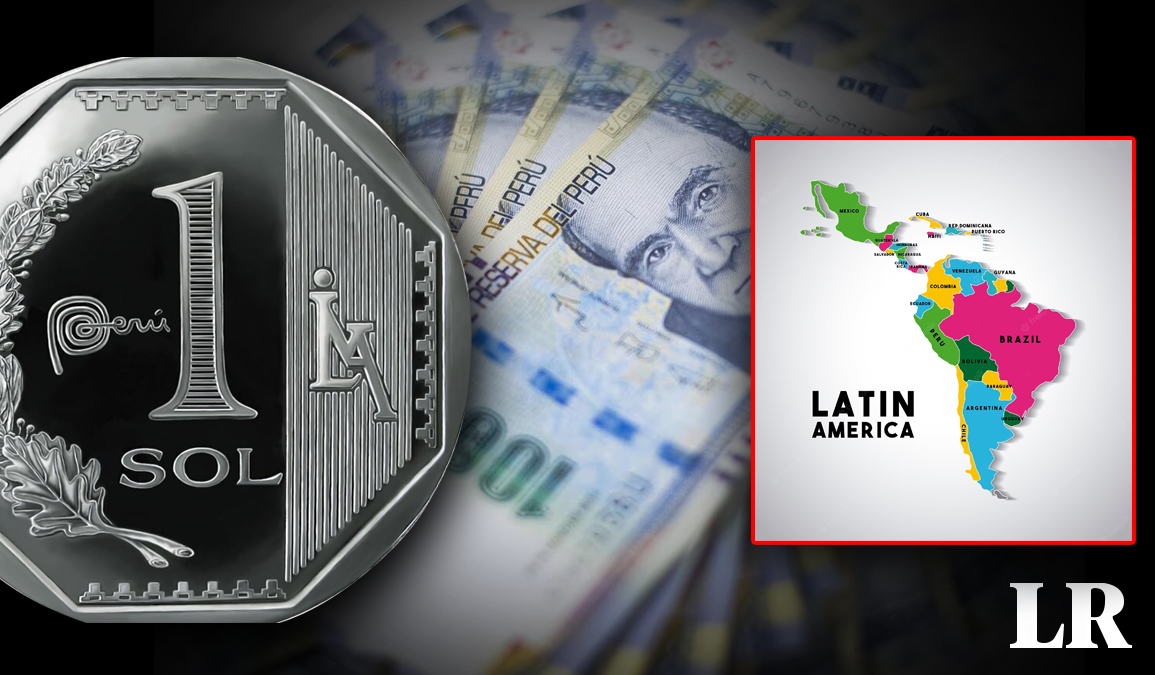
He peruvian sol has been the strongest currency of Latin America in the last 23 years, highlighted the Central Reserve Bank of Peru (BCRP) and this 2023 seems to be no exception because it has been positioning itself as the badge most stable in the region. This is reflected in the last three months, in which the sol appreciated against the dollar and its trend seems to be the most promising. What factors have contributed to this good moment of the local currency and what causes can continue to support it? We tell you here.
According to Scotiabank’s Department of Economic Studies, the peruvian sol has shown strength, despite the unusual volatility of the exchange rate in 2021 and 2022 marked by the political uncertainty after the electionsthe Russia-Ukraine conflict and expectations of interest rate hikes.
Peruvian sol: what factors support its good position in 2023?
In an interview for La República, the economist Javier Zuñiga attributes positive factors to the good prices for minerals and the export food sector that make the Peruvian product placed in the international market. “The significant inflow of foreign currency allows an accumulation of the net reserves of the country that are above US$74,000 million. Another factor that makes the exchange rate strong with respect to the local currency is the good management of the Central Bank, which for me is the best board of directors it has ever had”, aim.
However, the expert emphasizes that if the country’s political situation were more stable, that is, that the Executive and Legislature work hand in hand, the exchange rate would be at S/3.50. “The political circumstances are to run and every day is a novel. A Congress that has its back to the country, that makes expensive gifts for Mother’s Day when they should be looking for the economic stability”held.
Will the Peruvian sun stay strong?
According to Zuñiga, with Net International Reserves (NIR) of US$74,000 million —which is equivalent to 28% of GDP—, it is enough for the BCRP to manage the variables of the exchange rate and inflation. In addition, he estimates that the price of the green ticket will remain at a level of S / 3.60 and S / 3.65 during the course of the year. “We are not going to become the currency of Bolivia, Ecuador or Argentina, nor are we the new dollar or euro. We are a currency of a country that has any amount of resources that should be exploited, complying with all environmental and good corporate governance rules with neighboring countries,” he adds.
On the other hand, he is incredulous that a strong political event, such as a presidential Vacancy, can drastically alter the exchange market, thanks to the good support of international reserves.
“I don’t think that even with a vacancy, the exchange rate can move so much and return to the S/4.20 that it was at one point. It will move between S/3.65 to S/3.73 over the course of the year I bet that at the end of the year, we would be ending at 3.70%. I don’t see any reason for the exchange rate to skyrocket”, he maintains to this newsroom.
What is expected for 2024?
Scotiabank also stands out as a support of the local currency to the appetite for risk in the emerging marketsreflected in the rise of 2.50% in the indices of both stock markets and emerging market bonds; and the behavior of the international interest rates with respect to the rate in Peru, whose differential remains stable throughout the year.
“What we expect for 2024 is that the evolution of the sol reflects the balance of external fundamentals such as copper prices, the international trend of the dollar, the differential between interest rates in dollars and soles, and the willingness of the BCRP to avoid a lot of volatility. The basic assumption is that the exchange rate will move more based on markets and fundamentals, than on internal political turbulence,” reads the weekly economic report of the aforementioned financial institution.
Exchange rate in Peru: downward trend in the last quarter
As can be seen in the following table, in January—a month marked by the social unrest against President Dina Boluarte and the demand for the closure of Congress—, the dollar price closed at S/3.8470, as reported by the BCRP. From that moment on, the US currency completed a period of three months with a downward trend. Last Friday, May 12, the Central Bank reported that the exchange rate quoted at S/3.6620, a setback of -0.07% compared to Thursday’s close, when it stood at S/3.6625.
| Month | Exchange rate |
| January | S/3,8470 |
| February | S/3,7950 |
| March | S/3,7640 |
| April | S/3,7100 |
| (May 12) | S/3,6620 |
Exchange rate: how much did it close in 2021 and 2022, and what is expected for 2023?
The exchange rate, at the end of 2022, was S/3,807 per dollar, in a year marked by the presidential vacancy and the announcement of early general elections. At the culmination of 2021, the dollar was listed on S/3,991 in a year marked by presidential electionsocial conflicts and the global inflationary phenomenon.
According to the BCRP macroeconomic expectations survey, economic agents estimate that the exchange rate would average at the end of 2023 between S/3.80 and S/3.82 with a downward bias.
Source: Larepublica
Alia is a professional author and journalist, working at 247 news agency. She writes on various topics from economy news to general interest pieces, providing readers with relevant and informative content. With years of experience, she brings a unique perspective and in-depth analysis to her work.












